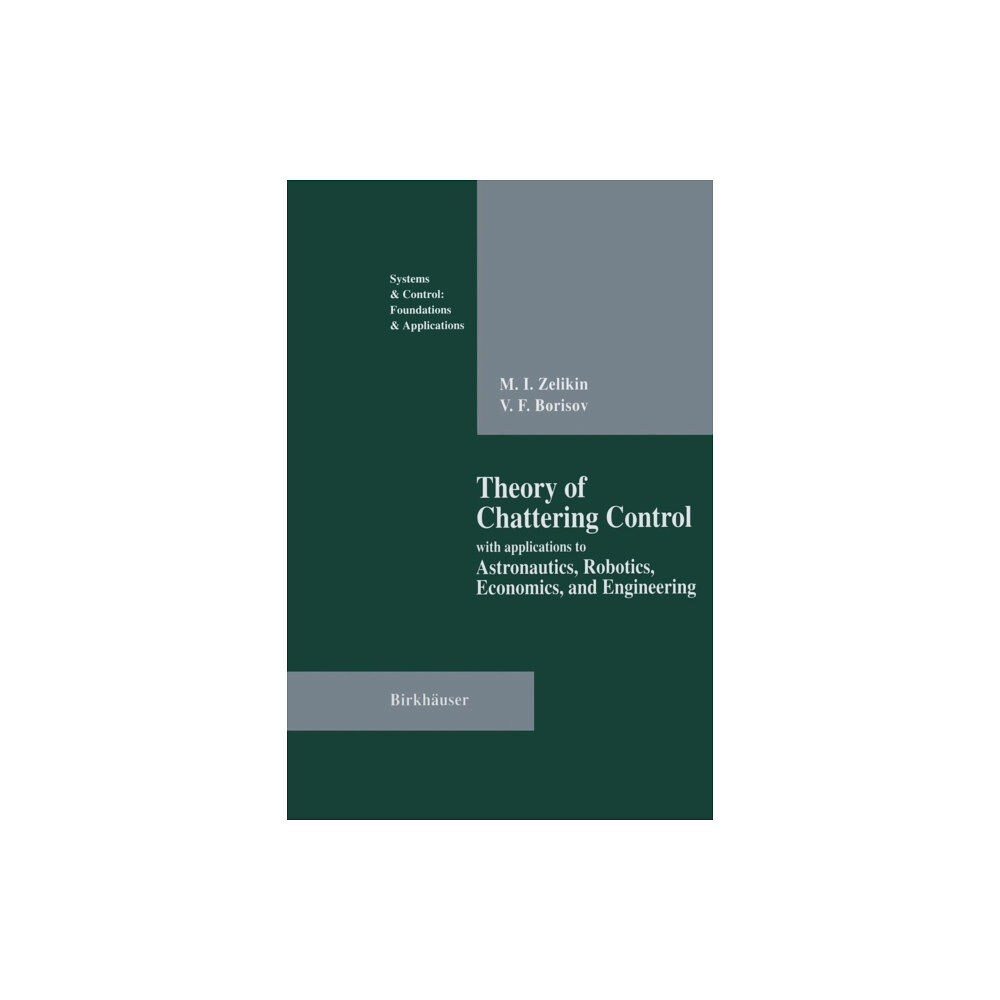- Hem
- Böcker
- Kurslitteratur
- Övrigt inom kurslitteratur
- Theory of Chattering Control (häftad, eng)

Theory of Chattering Control (häftad, eng)
The common experience in solving control problems shows that optimal control as a function of time proves to be piecewise analytic, having a...
959 kr
1 005 kr
Slut i lager
- Fri frakt
Fri frakt över 299:-
Snabb leverans
Alltid låga priser
Produktbeskrivning
The common experience in solving control problems shows that optimal control as a function of time proves to be piecewise analytic, having a finite number of jumps (called switches) on any finite-time interval. Meanwhile there exists an old example proposed by A.T.
Fuller [1961) in which optimal control has an infinite number of switches on a finite-time interval. This phenomenon is called chattering. It has become increasingly clear that chattering is widespread. This book is devoted to its exploration. Chattering obstructs the direct use of Pontryagin''s maximum principle because of the lack of a nonzero-length interval with a continuous control function.
That is why the common experience appears misleading. It is the hidden symmetry of Fuller''s problem that allows the explicit solution. Namely, there exists a one-parameter group which respects the optimal trajectories of the problem.
When published in 1961, Fuller''s example incited curiosity, but it was considered only "interesting" and soon was forgotten. The second wave of attention to chattering was raised about 12 years later when several other examples with optimal chattering trajectories were 1 found All these examples were two-dimensional with the one-parameter group of symmetries.
Fuller [1961) in which optimal control has an infinite number of switches on a finite-time interval. This phenomenon is called chattering. It has become increasingly clear that chattering is widespread. This book is devoted to its exploration. Chattering obstructs the direct use of Pontryagin''s maximum principle because of the lack of a nonzero-length interval with a continuous control function.
That is why the common experience appears misleading. It is the hidden symmetry of Fuller''s problem that allows the explicit solution. Namely, there exists a one-parameter group which respects the optimal trajectories of the problem.
When published in 1961, Fuller''s example incited curiosity, but it was considered only "interesting" and soon was forgotten. The second wave of attention to chattering was raised about 12 years later when several other examples with optimal chattering trajectories were 1 found All these examples were two-dimensional with the one-parameter group of symmetries.
| Format | Häftad |
| Omfång | 244 sidor |
| Språk | Engelska |
| Förlag | Springer-Verlag New York Inc. |
| Utgivningsdatum | 2011-09-16 |
| ISBN | 9781461276340 |
Specifikation
Böcker
- Häftad, 244, Engelska, Springer-Verlag New York Inc., 2011-09-16, 9781461276340
Leverans
Vi erbjuder flera smidiga leveransalternativ beroende på ditt postnummer, såsom Budbee Box, Early Bird, Instabox och DB Schenker. Vid köp över 299 kr är leveransen kostnadsfri, annars tillkommer en fraktavgift från 29 kr. Välj det alternativ som passar dig bäst för en bekväm leverans.
Betalning
Du kan betala tryggt och enkelt via Avarda med flera alternativ: Swish för snabb betalning, kortbetalning med VISA eller MasterCard, faktura med 30 dagars betalningstid, eller konto för flexibel delbetalning.
Specifikation
Böcker
- Format Häftad
- Antal sidor 244
- Språk Engelska
- Förlag Springer-Verlag New York Inc.
- Utgivningsdatum 2011-09-16
- ISBN 9781461276340
